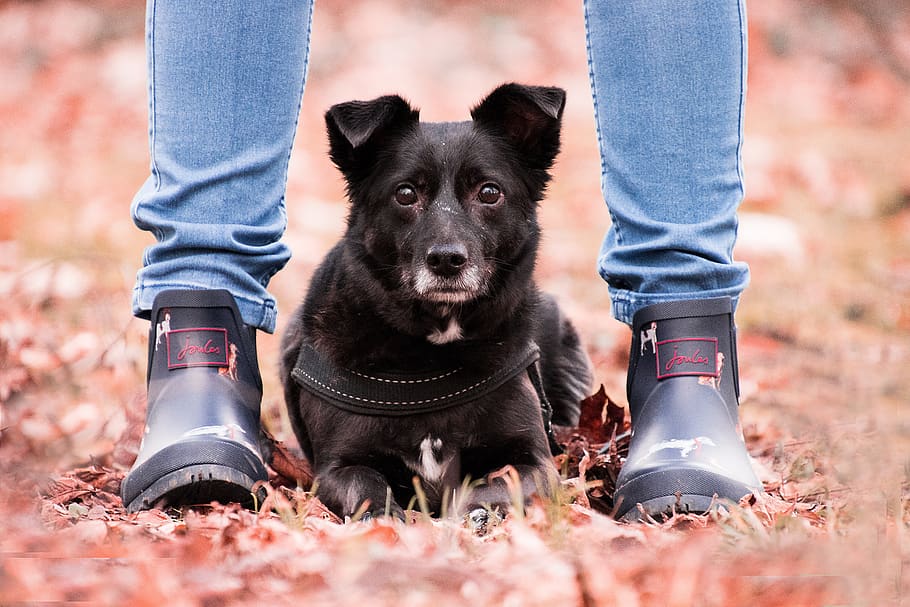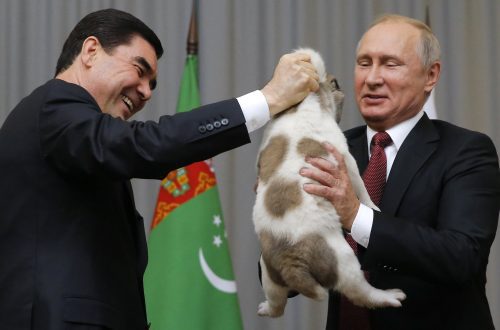
We read together. Olga Kazharskaya “My dog dominates”
Dominance is a topic that has already set the teeth on edge. But for some reason, a huge number of owners are still sure that dogs want to enslave them and become leaders in the family. Olga Kazharskaya’s book “My dog dominates” is devoted to this topic.

The author reminds readers that dominance theory was originally born when scientists observed packs of wolves in unnatural conditions of captivity. But in reality, in natural conditions, wolves live in families, and family relationships are based on cooperation, and not on the struggle for leadership. They have a very developed communication system, and each member of the pack adheres to the established rules, but at the same time has sufficient freedom of action.
A dog that enters a family immediately feels the strongest dependence on the owners, because they feed it, walk it, plan the daily routine and, in general, control the resources that are important for the dog. So no extra effort is needed to make the dog feel that you are the leader for him.
But if a person begins to behave strangely, from the point of view of a dog, problems appear. What are the weird things about people?
- Rudeness and carelessness.
- Lack of clear rules of family life.
- Fear of the initiative of the dog (“what if she starts to control us?”).
- Clumsy communication (excessive emotionality or, on the contrary, coldness and ignoring).
- Eternal search for signs of dominance.
The author emphasizes that dominance is not a permanent property of a person, but a predominant possession of resources in a given situation. For example, if you come to visit, the owners of the house set the rules, which means they dominate. But if you take a guest’s personal belongings without permission, he has the right to be indignant, because even in your house he still disposes of them.
Members of any group study each other and very quickly understand who is capable of what. And the leader becomes the most competent, able to effectively solve the problems that the group faces. Moreover, it happens that there are several leaders, specialists in a particular field. And dogs are well aware that a person is a generalist who determines life in the house as a whole, but there are tasks that a dog performs better – and a good owner allows him to perform them. But if the owner behaves aggressively and unpredictably, it really undermines the trust and respect of the dog.
What kind of dogs are most often mistakenly considered “dominant”?
- Self-confident.
- Emotional dogs and dogs with strong desires.
- Dogs in transition.
- Dogs protecting their resources.
- Dogs with sharp ways of communication.
However, in none of these cases, the problems are related to “dominance”. And if you start to “treat” them with “dominance suppression”, you can make even more problems and create a really dangerous situation.
The most aggressive dogs, according to the author, are dogs that are injured and live in poor conditions. And to reduce aggression, first of all, you need to put the dog’s nervous system in order.
In any case, aggression towards a person is not associated with dominance.
Alas, but, according to the author, the Russians can be called “a nation that believes in the dominance of dogs.” No wonder strict collars and chains are so popular. Who benefits from supporting the dog dominance theory?
- Ordinary people. It is much easier for them to blame the dog for being dominant than to look for the real source of the problem.
- Injured people.
- To those who have been given it. Many coaches are still “fighting dominance” and urging clients to follow suit.
- Traders. Many people make money from this.
At the same time, the dog that is “lowered in rank” experiences real horror, its life turns into a nightmare, and trust in the owner comes to naught. The dog displays stress signals, which again are mistaken for “dominance”, and the cruelty of owners and illiterate dog handlers increases.
Modern science is following a path that is completely opposite to that offered by “believers in dominance.” The dog is too complex a creature to write off everything as “dominance”. A huge amount of knowledge is needed to correctly interpret dog behavior and effectively solve problems that arise.
So love your dog, don’t panic if problems arise, and choose a trainer who can accurately assess your dog’s mental and physical condition. Remember: dogs are not naturally aggressive, otherwise we would never have domesticated them. The dog is a very peaceful creature. Of course, if it does not torment.
Source: Dogfriend Publishers www.dogfriend.org
About the Author: Olga Kazharskaya is a zoopsychologist, publicist, publisher. Olga has trained in dog psychology/ethology in Switzerland, Austria, Germany and Norway. In 2008, she founded Verlag Dogfriend Publishers, an international publishing house that introduces readers to modern psychology and communication-based dog training. In 2009, in addition to the publishing house, an educational center (Dogfriend Center) was created for dog owners and trainers in Austria, Latvia and Russia, and two years later educational work was expanded by the organization of the international Dogfriend Society (Der Internationale Verein Dogfriend).





